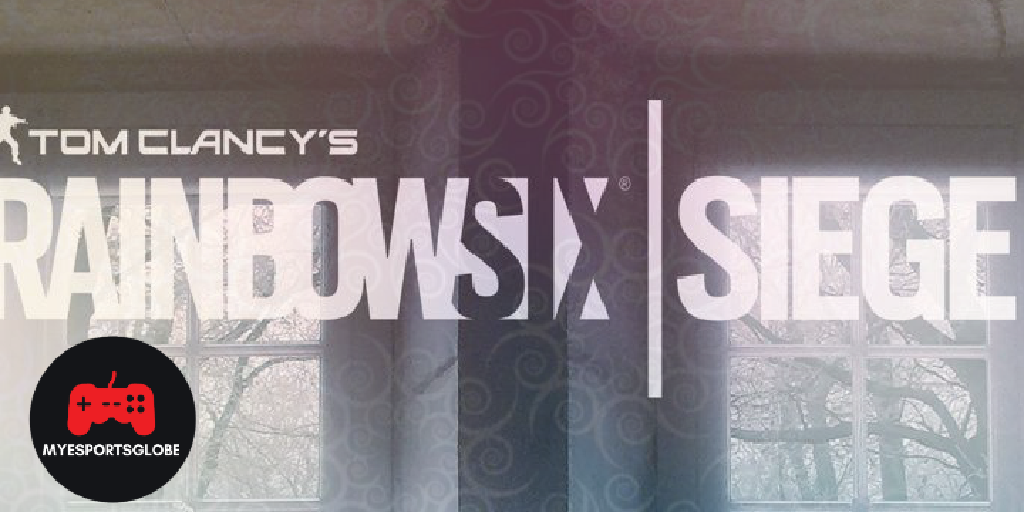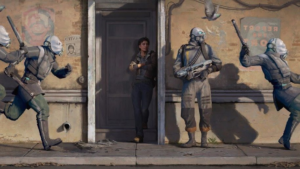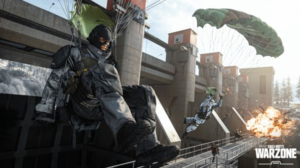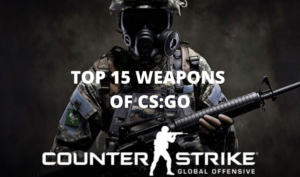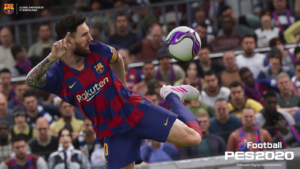Tom Clancy’s Rainbow Six Siege is an online tactical shooter video game developed by Ubisoft Montreal and published by Ubisoft. It was released worldwide for Microsoft Windows, PlayStation 4, and Xbox One on December 1, 2015; the game is also set to be released for PlayStation 5 and Xbox Series X in 2020.
The game puts heavy emphasis on environmental destruction and cooperation between players. Each player assumes control of an attacker or a defender in different gameplay modes such as rescuing a hostage, defusing a bomb, and taking control of an objective within a room. The title has no campaign but features a series of short, offline missions called “situations” that can be played solo. These missions have a loose narrative, focusing on recruits going through training to prepare them for future encounters with the “White Masks”, a terrorist group that threatens the safety of the world.
Siege is an entry in the Rainbow Six series and the successor to Tom Clancy’s Rainbow 6: Patriots, a tactical shooter that had a larger focus on narrative. After Patriots was eventually cancelled due to its technical shortcomings, Ubisoft decided to reboot the franchise. The team evaluated the core of the Rainbow Six franchise and believed that letting players impersonate the top counter-terrorist operatives around the world suited the game most.
To create authentic siege situations, the team consulted actual counter-terrorism units and looked at real-life examples of sieges such as the Iranian Embassy siege. Powered by AnvilNext 2.0, the game also utilizes Ubisoft’s RealBlast technology to create destructible environments.
Announced at Electronic Entertainment Expo 2014, it received four nominations from Game Critics Awards including Best of Show. The game received an overall positive reception from critics, with praise mostly directed to the game’s tense multiplayer and focus on tactics. However, the game was criticized for its progression system and its lack of content.
Initial sales were weak, but the game’s player base increased significantly as Ubisoft adopted a “games as a service” model for the game and subsequently released several packages of free downloadable content. Several years after the game’s release, some critics regarded Siege as one of the best multiplayer games in the modern market due to the improvements brought by the post-launch updates. The company partnered with ESL to make Siege an esports game. In February 2019, the game surpassed 45 million registered players across all platforms.
Gameplay –
Tom Clancy’s Rainbow Six Siege is a first-person shooter game, in which players utilize many different operators from the Rainbow team. Different operators have different nationalities, weapons, and gadgets. The game features an asymmetrical structure whereby the teams are not always balanced in their choices of abilities.
The base Counter-Terrorism Units (CTUs) available for play are the American Hostage Rescue Team (referred to in-game as the FBI SWAT), the British SAS, the German GSG-9, the Russian Spetsnaz and the French GIGN, each of which has four operators per unit split between attackers and defenders (other units were later added through downloadable content, see below). Players also have access to a “Recruit” operator who can choose from a more flexible assortment of equipment at the expense of having a unique gadget or the ability to customize their weapon.
Players can pick any operator from any unit that is defending or attacking before a round starts, choosing spawn points as well as attachments on their guns but are not allowed to change their choices once the round has started. An in-game shop allows players to purchase operators or cosmetics using the in-game currency, “Renown”, which is earned at the end of matches from actions performed in-game.
Different gameplay modes are awarded at different rates, with ranked matches offering the largest renown multiplier potential per match. Players can also complete in-game “challenges” to get a small amount of renown. Renown gain rate can also be affected by the using in-game “boosters” which gives the player a 100% increase in all renown earned for various duration, starting with 24 hours. A premium currency known as “R6 credits” can also be purchased using real-world currency to get operators quicker in-game, or other cosmetics.
Maps in the game are designed to encourage close quarters combat, and players cannot respawn until the end of a round. Players who were killed by opponents can enter “Support Mode”, which allows them to gain access to drone’s cameras and security cameras so that they can continue to contribute to their team by informing them of opponent locations and activities.
Matches last only four minutes for a casual and three minutes for a rank. Teamwork and cooperation are encouraged in Siege, and players need to take advantage of their different abilities in order to complete the objective and defeat the enemy team. Communication between players is also heavily encouraged. The game also has a spectator mode, which allows players to observe a match from different angles.
Game Modes –
At launch, the game featured 11 maps and 5 different gameplay modes spanning both PVE and PVP. With the downloadable content (DLC) released post-launch with an additional four maps from year one and three maps from year two – there are currently 20 playable maps. The gameplay modes featured include:
Hostage –
A competitive multiplayer mode, in which the attackers must extract the hostage from the defenders, while the defenders must prevent that from happening either by eliminating all of the attacking team or successfully defending the hostage until the time expires. A secondary manner of winning can occur if the attacking or defending team accidentally damages the hostage, causing the hostage to “down”; if the opposing team can prevent the revival of the hostage, and the hostage bleeds-out and dies, they will win the round.
Bomb –
a competitive multiplayer mode, in which the attackers are tasked with locating and defusing one of two bombs. The defenders must stop the attackers by killing all of them or destroying the defuser. If all attackers are killed after the diffuser is planted, the defuser must still be destroyed for a defending victory.
Secure Area –
a competitive multiplayer mode, in which the defenders must protect a room with a biohazard container, while the attackers must fight their way in and secure it. The match ends when all players from one team are killed or the biohazard container is secured by the attackers when there are no defenders in the room.
Tactical Realism –
a variation of the standard competitive multiplayer modes, added with the release of the Operation Skull Rain DLC. The game mode features a heavier emphasis on realism and teamwork, removing most of the heads-up display (HUD) elements, the ability to mark opponents, and the ability to see teammates’ contours through walls, while also featuring the addition of a realistic ammo management system.[22] This mode is no longer in the game but some aspects are in the other multiplayer modes.
Terrorist Hunt –
a solo or cooperative multiplayer mode for up to five players. Players take on the role of either attackers or defenders, and must fight against waves of enemies controlled by artificial intelligence across various modes like Bomb, Hostage, or Elimination (Terrorist hunt classic).
Situations –
the game’s most significant single-player component, with 10 solo and 1 co-op multiplayer missions that serve as introductory and interactive tutorials to the game’s mechanics.
Outbreak-
A limited time event exclusive to Operation Chimera, Outbreak pits a 3 player team in a co-op PVE environment against an extraterrestrial biohazard threat, namely AI-controlled heavily mutated forms of humans infected with said alien parasite. Two difficulties exist for this mode, for which the chief difference was the inclusion of friendly fire on the harder one.
Arcade-
Random limited time events which modify elements of existing modes and is on a smaller scale compared to seasonal game modes, this includes the Golden Gun event
Seasonal Events –
Limited time events which are available for one season. These are normally large scale game modes which are completely unique to regular Bomb, Secure Area, or Hostage Game modes.
Development –
The game’s predecessor was Tom Clancy’s Rainbow 6: Patriots, a tactical shooter announced in 2011. It had a focus on narrative, and the story campaign features many cut-scenes and scripted events. However, the game fell into a development hell shortly after its announcement. The game’s outdated engine and frequent change of leadership hindered development progress, and game quality was not up to par.
In addition, it was planned to be released on seventh-generation video-game consoles which were not capable of processing certain game mechanics. Seeing the arrival of a new generation of consoles, the team wanted to make use of this opportunity to create a more technologically advanced game. As a result, Ubisoft decided to cancel Patriots and assembled a new team of 25 people to come up with ideas to reboot the series.
Design –
The 150-person team consisted mainly of first-person shooter veterans or longtime Rainbow Six players. Despite having prior knowledge on how these types of games work, the team decided to study historic examples of counter-terrorist operations, including 1980’s London Iranian Embassy siege, 1977’s Lufthansa Flight 181 hijacking, and 2002’s Moscow theatre hostage crisis to ensure that the portrayal of these operations was accurate and appropriate.
The team also consulted counter-terrorism units, such as the National Gendarmerie Intervention Group (GIGN), for their opinions on how they would react during a hostage rescue situation. According to Xavier Marquis, the game’s creative director, having a hostage rescue mission in the game helped create an immersive story.
By allowing players to assume control of an operator tasked with saving innocents, it gives them an objective and a priority. They must be careful in dealing with the situation and try their best not to hurt the hostage. This further promotes teamwork between players and prompts them to plan before attacking, and further makes the game more realistic, tense and immersive.
To make the game feel more realistic, the team introduced a mechanic called “living hostage” to govern the hostage character’s behavior – e.g., coughing if there is dust in the air or shielding him or herself if there is nearby gunfire.
The environmental destruction mechanic was one of the game’s most important elements. When the game’s development was begun, the developer’s in-house team completed their work on RealBlast Destruction, an engine that “procedurally breaks everything down” and remodels the environment. The development team thought that this technology fitted the game’s style and gameplay, and decided to use it.
This aspect of the game became increasingly important during development, and the team spent an extended period of time making sure that these destruction were authentic. As a result, the team implemented a materials-based tearing system, in which environmental objects of different materials show different reactions to players’ attacks.
Release –
Ubisoft announced the game at their press conference during Electronic Entertainment Expo 2014. In August 2015, Ubisoft announced that they had delayed the game’s release from October 10 to December 1, 2015, in order to give additional time for the team to balance the game for cooperative multiplayer play. A closed alpha-testing was held by Ubisoft on April 7–13, 2015, in which players could play an early version of the game in order to help the development team test their servers and core gameplay loops, and to provide feedback.
Ubisoft held a closed beta, starting on September 24, 2015, for further testing. The company originally wanted to hold another round of testing with the release of the game’s open beta on November 25, 2015, but they delayed its release to November 26 due to matchmaking issues. Players who purchased Siege for the Xbox One could download Tom Clancy’s Rainbow Six: Vegas and its sequel, Tom Clancy’s Rainbow Six: Vegas 2 for free.
To launch the game in Asian markets, Ubisoft announced plans to remove graphic imagery from all versions of the game via a patch. The plan was later withdrawn by the developer due to review bombing and negative fans feedback.
Reception –
The pre-release reception of the game was positive, with critics praising the game’s design and tensions created during matches. In 2014, the game received four nominations from Game Critics Awards: Best of Show, Best PC Game, Best Action Game and Best Online Multiplayer Game. The game eventually became the winner of the Best PC Game category.
To read more about your favourite games go to our website, MyEsportsGlobe.
If you haven’t yet then do follow MyEsportsGlobe on social handles to get regular updates –

